For the letter A, we choose one of the great classics in the history of painting: the self-portrait. Famous ones include those by Vincent van Gogh, Rembrandt, Albrecht Dürer, as well as those by Raffaello, Frida Kahlo, Antonio Ligabue, and, of course, Leonardo da Vinci's self-portrait.
But what is the first self-portrait in the history of art that we know of? The first self-portrait could be identified with the one created by Jean Fouquet (Tours, between 1415 and 1420 – 1481), a French painter and illuminator, present in the Melun Diptych, a panel painting attributed to him, dating back to around 1450-1455 and now disassembled. His self-portrait is a miniature (7.5 cm in diameter) that constituted the "signature" of the diptych, now preserved at the Louvre in Paris.
However, if we are talking about a work in which the portrait of the author is the true subject of the work, the first self-portrait in history that we know of is commonly attributed to Albrecht Dürer, the famous German Renaissance artist and master engraver, who created his self-portrait in 1484 when he was only thirteen years old. This work is now preserved in the collection of the Pinakothek in Munich. Dürer is known for his mastery in self-portraiture and created several other works of this genre throughout his life.
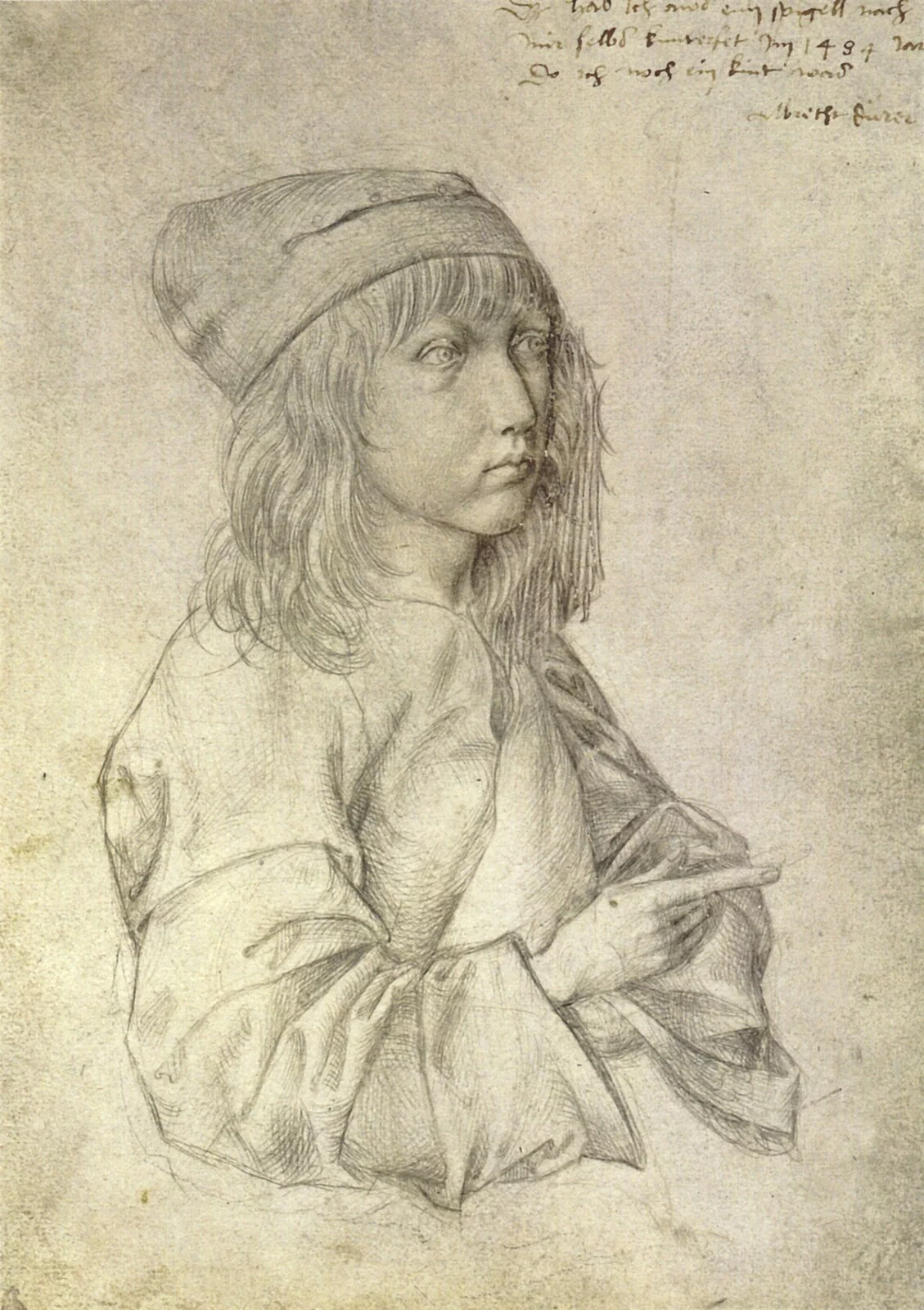
Albrecht Dürer at 13, silverpoint, (1484). 27.3 x 19.5 cm (10.7 x 7.6 in). Albertina, Vienna
But let's return to the present and to the self-portraits that can be admired in the current temporary exhibitions.
The only self-portrait painted by Amedeo Modigliani
It's essential to start this exhibition review with the display "Returns. From Modigliani to Morandi," given the exceptional nature of exhibiting the only self-portrait painted by Amedeo Modigliani, one of the most important and beloved Italian artists of the 20th century. The masterpiece by the Livornese painter, now part of the collections of the MAC USP Museu de Arte Contemporânea da USP in São Paulo, Brazil, arrives at the Museo Novecento in Florence after about eighty years since its departure from the Della Ragione Collection. It will be possible to admire it until September 15, 2024. The exhibition showcases nineteen great masterpieces of Italian twentieth-century art belonging to Alberto Della Ragione.
Modigliani's self-portrait was purchased by the engineer in 1938 and most likely resold around 1944: a very painful decision for the naval engineer, who in August of that same year confided to his friend Birolli the reasons that had led him to take this painful step. "About the sale of the Modigliani – Della Ragione wrote – I am sure that I will regret it, but it is precisely this certainty that ennobles the sacrifice made not for me but for those who have the right to be able to count on me whatever happens." The beauty of the painting requires it to be reproduced in its entirety.... read the rest of the article»
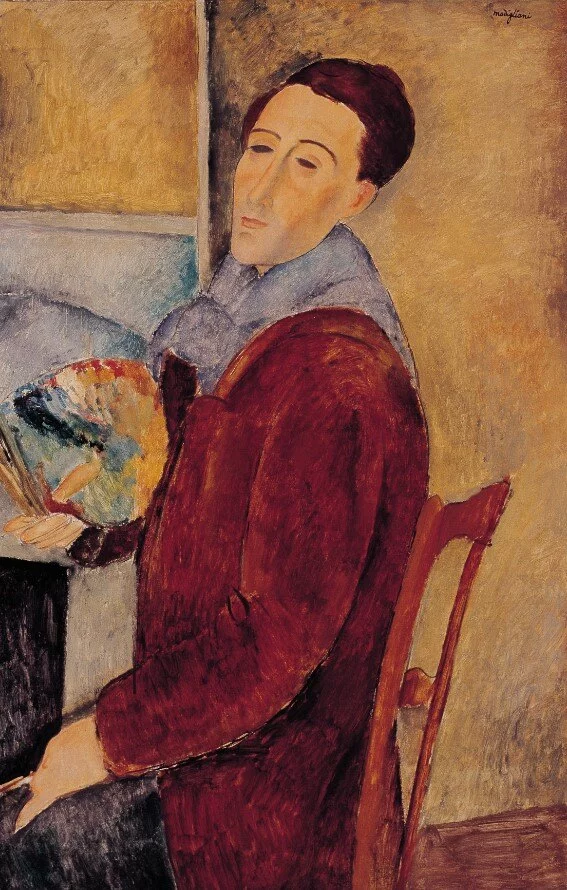
Amedeo Modigliani, Autoritratto, 1919 olio su tela 100 x 65 cm. Courtesy MAC USP Collection - Museu de Arte Contemporânea da USP Collection, São Paulo, Brazil
The self-portrait of Guercino at the Royal Museums of Turin
The work is visible in the context of the exhibition "Guercino. The Painter's Craft" in the Chiablese Rooms of the Royal Museums of Turin. On display until July 28, 2024, are over 100 works by Guercino and contemporary artists, coming from more than 30 important museums and collections, including the Prado and the Monastery of El Escorial, to present the great art of the Emilian Master and at the same time recount the profession and life of painters of the seventeenth century, in a fascinating, large fresco of the art system. Among these, brought together for the first time in 400 years, is also the cycle of paintings commissioned in Bologna by Alessandro Ludovisi, future Pope Gregory XV.
The exhibition path opens with a self-portrait of the artist, whose real name was Giovanni Francesco Barbieri, who lived between the late sixteenth and seventeenth centuries (Cento, February 2, 1591 – Bologna, December 22, 1666). In the painting, coming from the Schoeppler Collection in London, Guercino appears to us at about forty years old and with the tools of his trade. It is an intimate and private work that for this reason does not appear in his famous "Book of Accounts," but which testifies to the character of a man proud and simple at the same time.
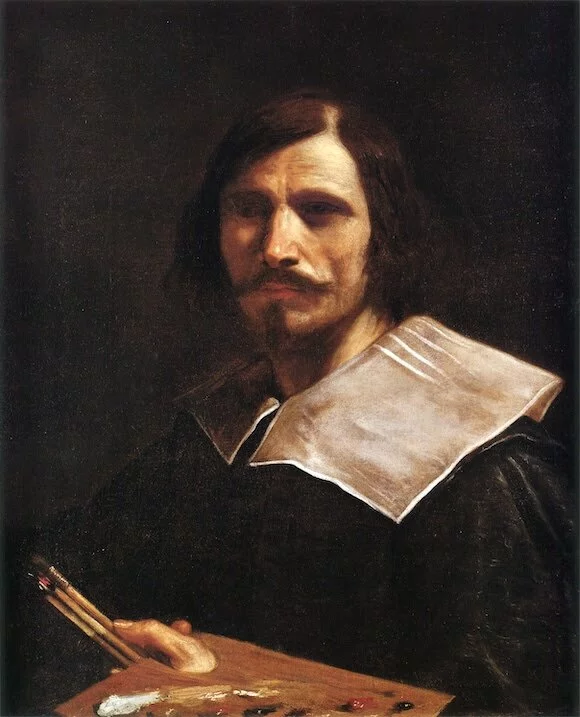
Guercino, Autoritratto, 1630-1632, olio su tela, 70,5 x 65 cm, Londra, Schoeppler Collection
Antonio Ligabue in Turin and Trieste
Another much-loved artist who created numerous self-portraits throughout his life is Antonio Ligabue (December 18, 1899, Zurich - May 27, 1965, Gualtieri). Ligabue is currently the protagonist of two exhibitions in Italy. The first, where a self-portrait is represented in the image chosen for the promotion of the exhibition, is set up at the Società Promotrice delle Belle Arti in Turin until May 26, 2024. The exhibition displays over 90 works (71 paintings, 8 sculptures, and 13 drawings from private collections) that illustrate the tormented life and varied production of an "eccentric" artist, largely misunderstood during his lifetime but beloved by the public after his death.
The second exhibition is set up at the Revoltella Museum in Trieste, where among the 60 works present, including oils, drawings, and sculptures, there are also several of his self-portraits.
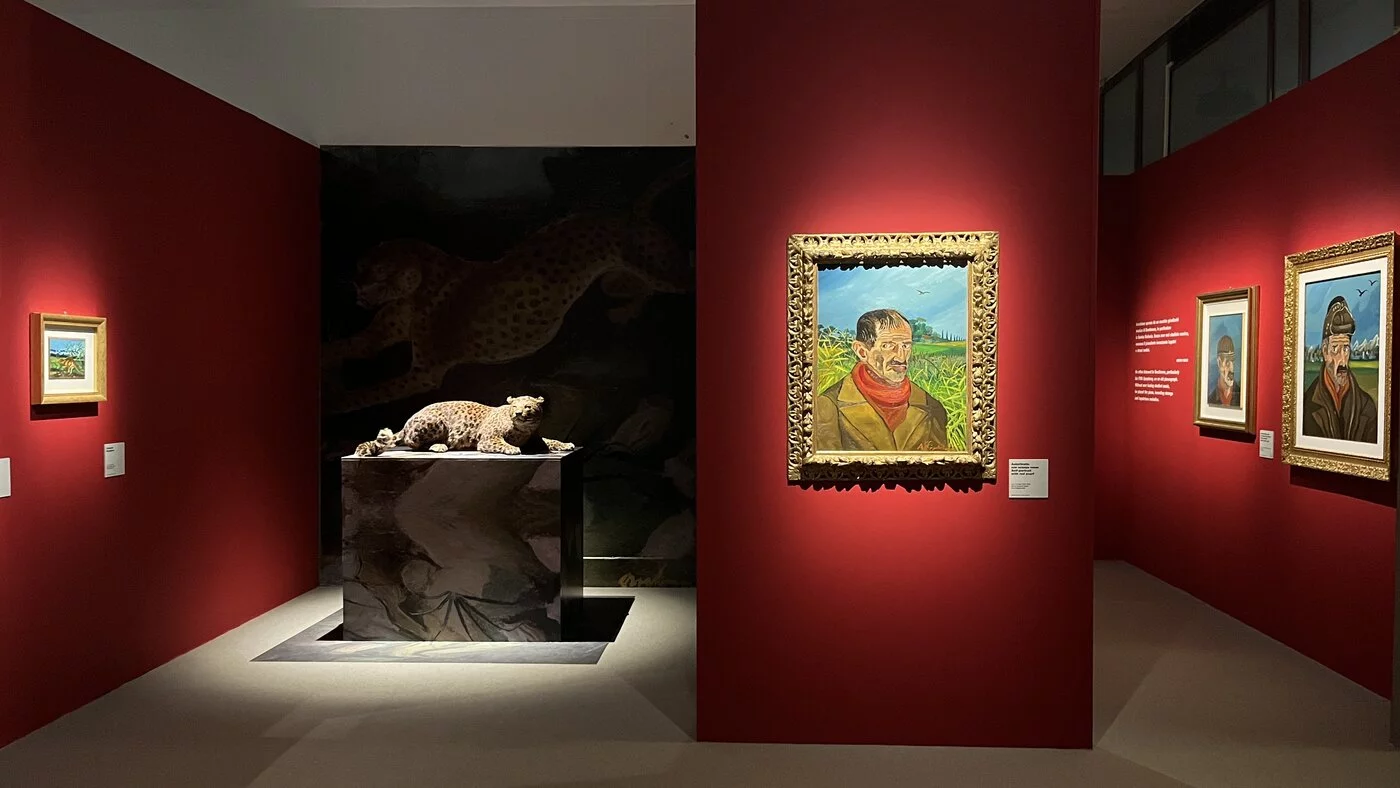
Foto di allestimento della mostra "Antonio Ligabue" al Museo Revoltella di Trieste
The same Revoltella Museum is hosting a second exhibition until June 30 dedicated to another artist renowned for his self-portraits that have become some of the most famous works in the history of modern art: Vincent van Gogh. In this case, his self-portraits are not on display, but it is still a major exhibition, as we have described in this article.
Self-portraits in Genoa
One of the greatest painters of the 20th century and author of famous self-portraits is Giorgio de Chirico. The exhibition "Nostalgia. Modernity of a Feeling from the Renaissance to the Contemporary" showcases his unique "Self-portrait as Ulysses" (1922-1924). Also on display is a self-portrait by the Italian painter Giacomo Trecourt, "Self-portrait in Oriental Costume," circa 1845.
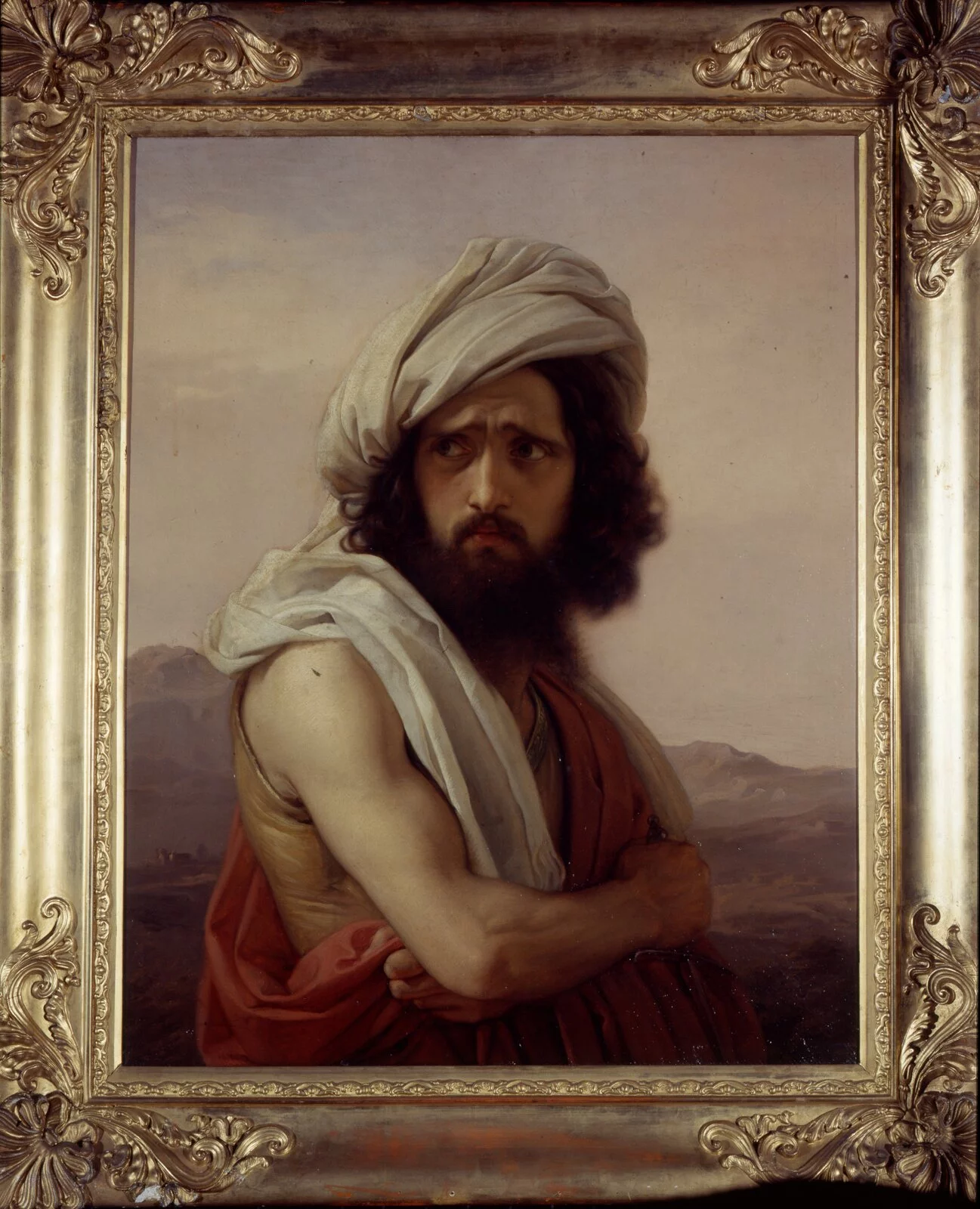
Giacomo Trecourt, Autoritratto in costume orientale P 1026, 1842 circa, olio su tela, 80,5x65 cm, Comune di Pavia - Musei Civici e Castello
The subject of the exhibition is not clearly the self-portrait, but rather the theme of "nostalgia in art," with a truly rich exhibition itinerary, featuring over 120 works and prominent names from the Renaissance to the contemporary era, from Albrecht Dürer himself to Anish Kapoor, passing through Boldini, Lucio Fontana, and many others.
Self-portraits of great Venetian portraitists
Just a few weeks ago, the exhibition "Woman on Stage: Boldini, Selvatico, Martini" opened to the public at the Santa Caterina Museum in Treviso. The theme of the exhibition is the woman of the late nineteenth century, protagonist of the new worldliness of the period that coincides with the years of the Belle Époque, and at the center of the exhibition are portraits of fashionable women of the time, but the exhibition path opens with three self-portraits. These are the three great Venetian protagonists of the exhibition: Lino Selvatico, Alberto Martini, and Giulio Ettore Erler.
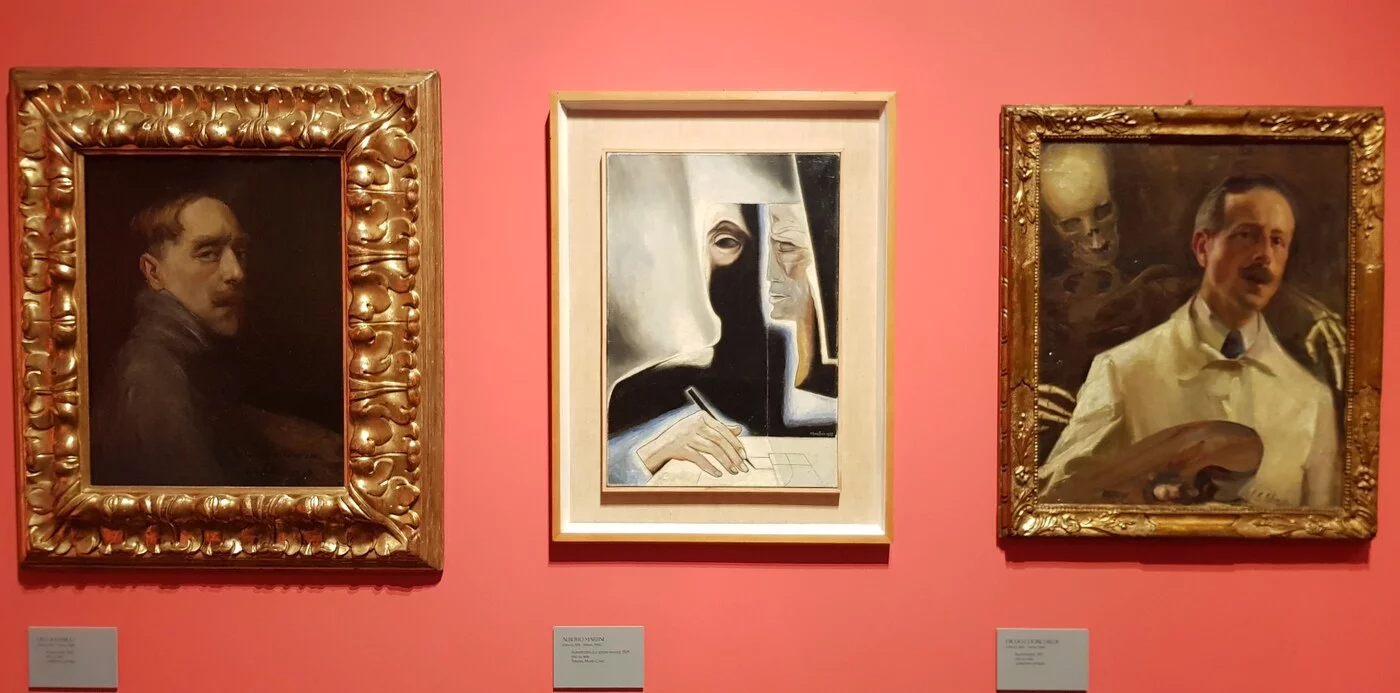
Lino Selvatico (a sinistra), Alberto Martini (al centro) e Giulio Ettore Erler (a destra)
The most remarkable is certainly that of Alberto Martini, whose full name is Alberto Giacomo Spiridione Martini (Oderzo, November 24, 1876 – Milan, November 8, 1954). Son of Giorgio Martini, a naturalistic painter and drawing professor, Alberto Martini was an Italian draftsman, painter, engraver, and illustrator, a precursor of the surrealist movement. A precursor because while André Breton launched dreamlike art in 1924, Martini had already exhibited a series of drawings and lithographs under the label "Art of the Dream" at the Venice Biennale in 1907. In fact, the French surrealists themselves asked him to join their group, but Martini refused due to differences in themes and his independent and autonomous poetic. After a brief stay in Paris in 1904, Martini moved to Paris in 1929 and remained there until 1934, finding high-profile friendships and numerous admirers of his art. In the French capital, Martini frequented the circles of critics and literati. He befriended Solito de Solis, a musician and art enthusiast, who introduced him to Parisian aristocratic salons.
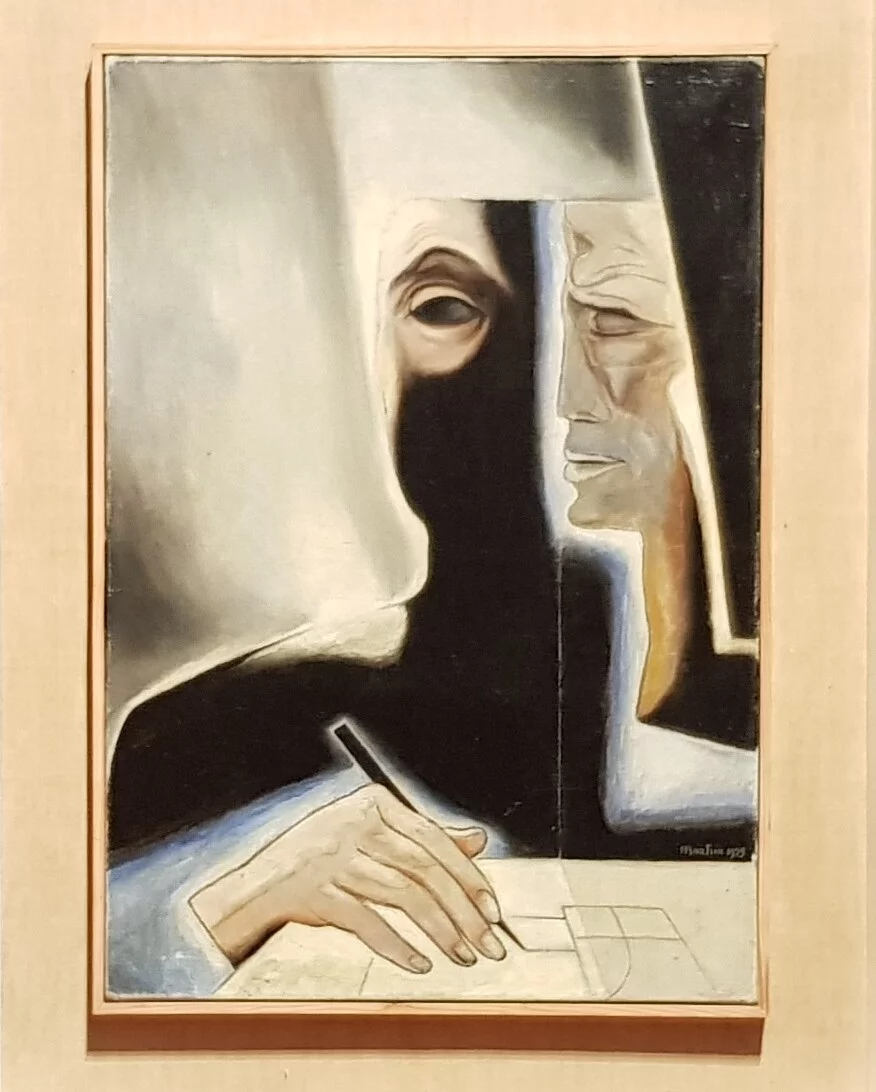
Autoritratto di Alberto Martini
He is an artist, a great illustrator, who deserves greater attention from the general public, and the exhibition in Treviso allows us to appreciate his skills as a portraitist with a series of works that denote his unmistakable style.
It won't be difficult to recognize them among others even by watching our video dedicated to the exhibition.
Link per approfondire:
Redazione
Pubblicato il April 30, 2024
Itinerarinellarte.it
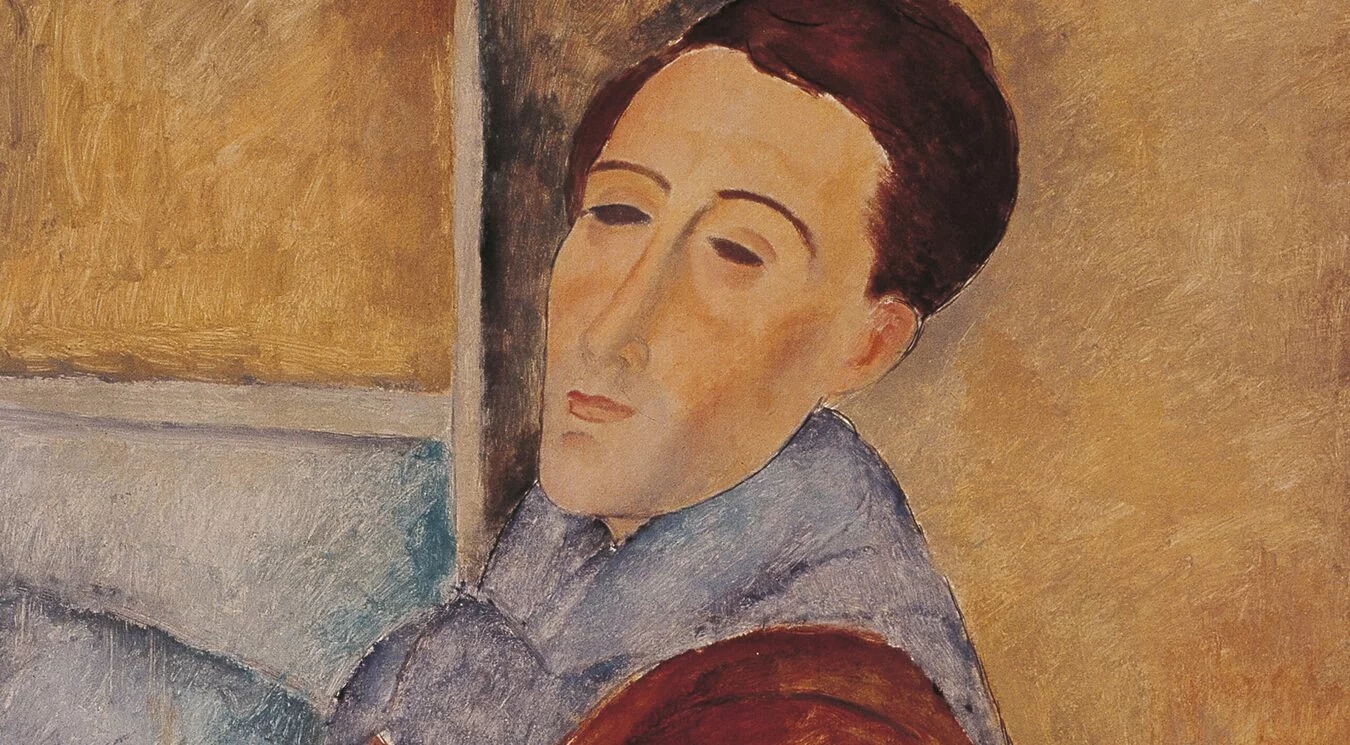
 itinerarinellarte.it è un sito che parla di arte in Italia coinvolgendo utenti, musei, gallerie, artisti e luoghi d'arte.
itinerarinellarte.it è un sito che parla di arte in Italia coinvolgendo utenti, musei, gallerie, artisti e luoghi d'arte.